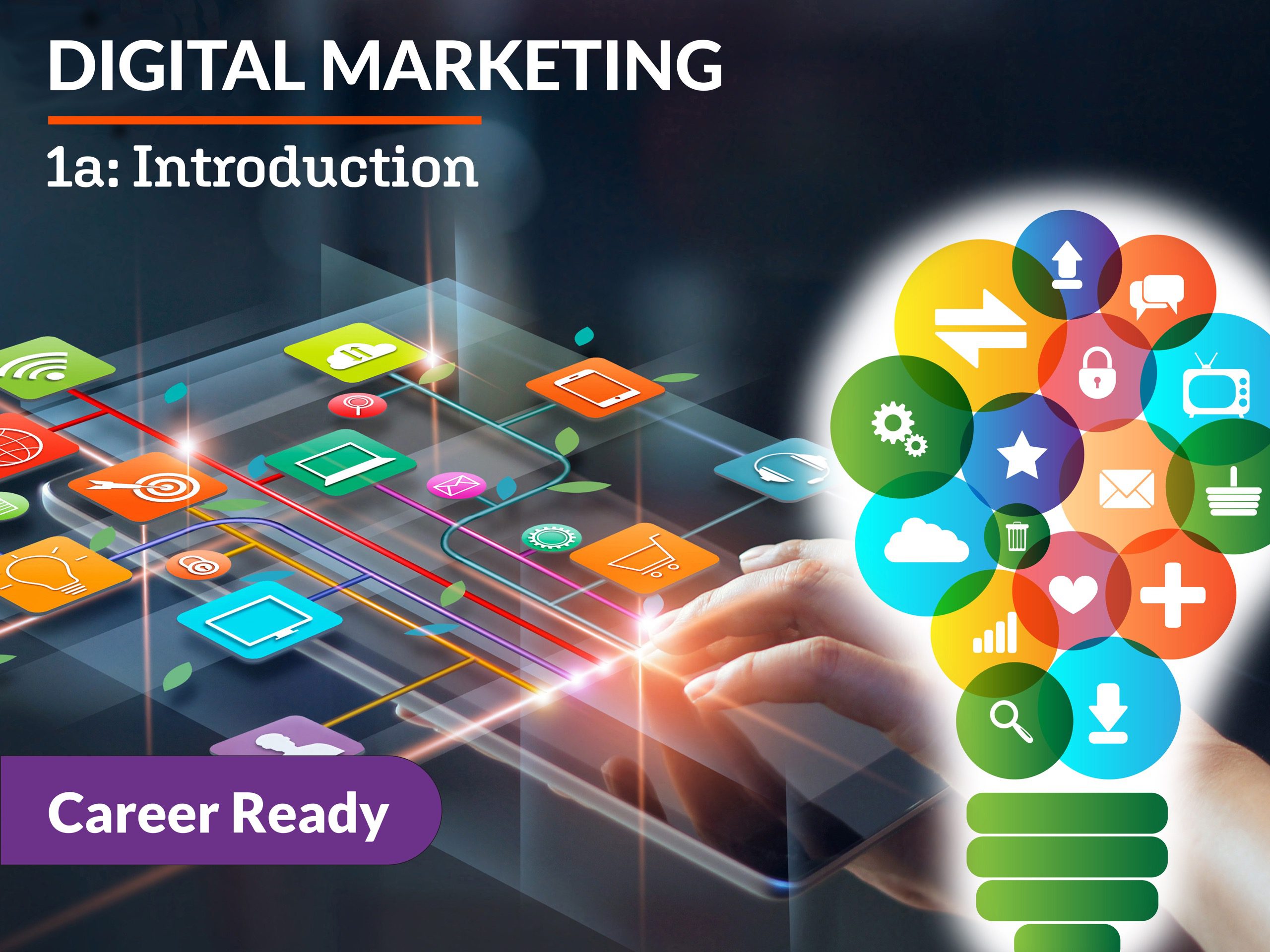
Digital Marketing 1a: Introduction
Digital marketing is where creativity meets strategy, and innovation is the name of game. Explore how to captivate audiences in the digital landscape. From mastering social media platforms to crafting compelling content that leaves a lasting impression and evaluating the successes (and failures) of innovative brands, students learn the secrets behind building a powerful online presence. Analyzing the consumer and their journey, students learn the power of storytelling and how to pull their promotional strategy into a multi-channel campaign.
Units at a Glance
Unit 1: Understanding the Digital Marketplace
In this unit, you will embark on an exciting journey into digital marketing. Beginning with the foundational concepts of both traditional and digital marketing, you’ll explore how marketing extends beyond just selling to providing value in various forms. We’ll investigate diverse digital marketing mediums, tactics, and essential tools integral to the digital marketplace. By the end of this unit, you’ll be up to speed on the latest trends and equipped with the knowledge and skills to successfully navigate the dynamic world of digital marketing.
Unit 2: Understanding the Digital Consumer
In this unit, our focus shifts from the marketing mix to understanding the digital consumer. You’ll learn what makes the digital consumer tick—from their social media habits to their online shopping behaviors—and recognize the importance of each like, share, and search in shaping consumer trends. From constructing detailed buyer personas to exploring the interaction between primary and secondary audiences, you’ll understand how marketers create content that resonates with every segment of their target market.
Unit 3: Digital Real Estate: Websites and SEO
In this unit, we’re shifting gears from the digital consumer to the role of websites in marketing. You’ll uncover strategies that help boost a website to the top of search results, explore the importance of website design, and learn how websites leverage user experience to encourage consumers to act now!
Unit 4: Social Media Mania
Are you ready to explore the vibrant and entertaining world of social media? By the end of this unit, you’ll have the skills needed to create a social media marketing plan, understand current social media trends, and evaluate social media platforms based on their features and target audience.
Unit 5: Creating Personalized Experiences
In this unit, you’ll learn how marketers create personalized experiences through email marketing, targeted advertising, and mobile marketing. You’ll discover how marketers target ads to reach the right audience and explore the dynamic world of mobile marketing in order to engage consumers on the go. By the end of this unit, you’ll have a deeper understanding of the tools and techniques that make digital marketing campaigns successful and how they’re tailored to meet each customer’s unique needs and preferences.
Unit 6: Digital Storytelling: Blogs, Podcasts, & Videos
In this unit, you will explore the art of digital storytelling through various mediums. We will discuss the impact of blogs, podcasts, webinars, and videos and learn how to create engaging content for each one. By the end of this unit, you’ll understand how to use these tools in your digital marketing projects to make your ideas stand out and reach people in new and exciting ways.
Unit 7: Channel Surfing: Creating a Multichannel Marketing Strategy
There is more than one path to reaching digital consumers. In this unit, you will learn about the multi-lane highway of communication channels that make up multichannel marketing. Multichannel marketing ensures that your message is heard. Regardless of where your audience spends their time online—social media, email, reading blog posts, or apps—they can always find your brand. A multichannel strategy lets you speak directly to your customers wherever they hang out.
Unit 8: Understanding the Customer Journey
In this unit, we’ll break down the customer journey. You’ll track the touchpoints brands use to interact with customers, learn about the strategies that keep customers moving toward purchasing products or services, and discover how every point of contact is a unique opportunity to shape customers’ experiences and perceptions. Understanding this journey allows businesses to design a customer experience that feels less like a transaction and more like a guided tour.
Required Materials
Physical
- Video recording device
Software
- Word processing software
- Presentation software
Optional
- Art supplies
- Audio recording device
- Graphic design software
- Poster board
- Spreadsheet software



